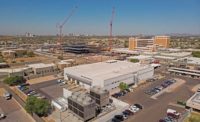How many people not in a history class still talk about the landmark Supreme Court case won by a Brooklyn kosher chicken company, A.L.A. Schechter Poultry Corp., in 1935? It was a major setback for President Franklin D. Roosevelt and the framers of the New Deal, who wanted to allow regulation of prices and wages at the state level to give workers a break. The Supreme Court killed this part of the New Deal as an unconstitutional delegation of authority to the states. The first New Deal was borne of economic desperation in the 1930s and designed to pull the U.S. out of a miserable depression. Some of its creations became vital elements of American life—fairer employment and labor practices, the Social Security Act, electricity to rural areas and heavily used bridges and infrastructure. The overall program was not welcomed with bipartisan support, nor was all of it an unqualified winner. And while it took World War II to finally end the Great Depression, the New Deal succeeded in limiting the suffering.
The Green New Deal is an attempt to overhaul U.S. energy infrastructure. It is also an attempt to act proactively before climate change-related storms and floods inflict unimaginable damage and suffering—the economically wiser road to take.
Some parts of the Green New Deal may not be so green in order to win more Republican support.
The Green New Deal is also explicitly an effort to close the gap between rich and poor in an era of comparative prosperity. That mixing of purposes guarantees that, as much or more than the original New Deal, it will be bitterly fought over in a divided Congress, possibly over its constitutionality.
If it were federally funded and enacted in one package, a Green New Deal would have an immense price tag and could spike the federal deficit even more than President Donald Trump’s tax cut and congressional spending have already. There are several more likely scenarios that could play out. Pieces of the Green New Deal may end up in the next surface transportation bill; a good first step would be to weave resilient features into highway and transit project planning and construction.
There is much political nonsense being circulated on the subject, much of it based on the idea that climate change isn’t real and that the federal debt—often ignored by both parties—is a reason to defeat such a program. Let’s remember that similar arguments against spending were rolled out against the economic recovery and stimulus passed 10 years ago by a divided Congress during the Obama Administration, helping pull the country out of a deep recession.
With a Republican Senate and White House, we’re likely to see a compromise version of the Green New Deal in a paler shade than what the House Democrats have framed. So some elements of the Green New Deal may not be so green in order for the program to be passed. The worst that could happen is that there is no deal on energy, climate change and infrastructure. What will happen to future generations if this opportunity is wasted?
Editor's note: This editorial was amended April 1 to reflect more clearly that the Great Depression was finally ended by World War II, not the New Deal, and persisted through much of the New Deal. The New Deal was successful in limiting suffering and reshaping American society and it's expectations of government's role.





Post a comment to this article
Report Abusive Comment